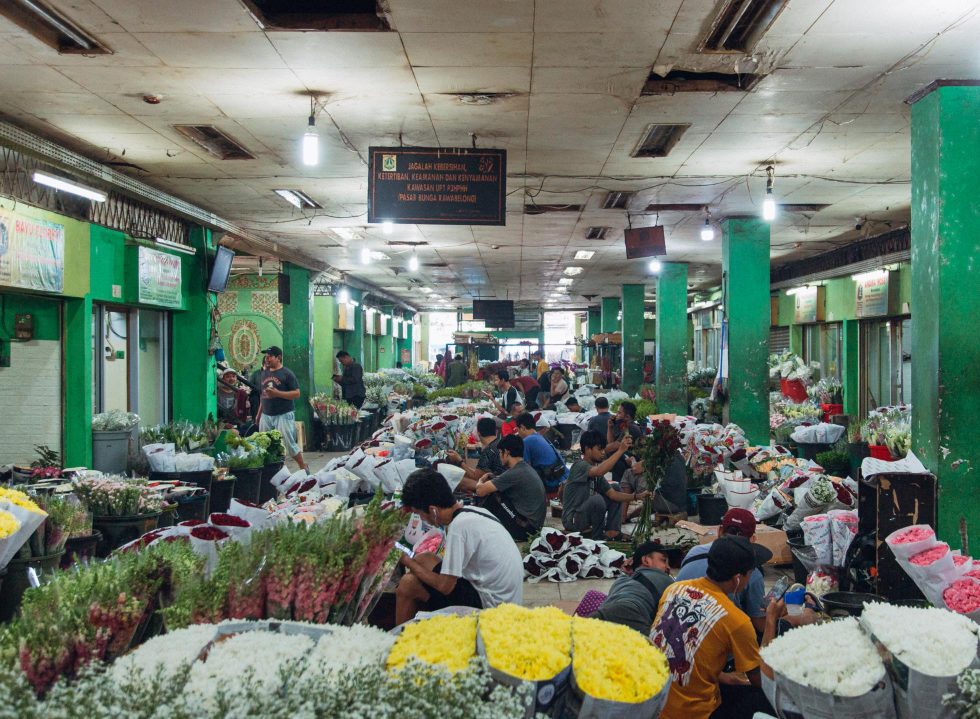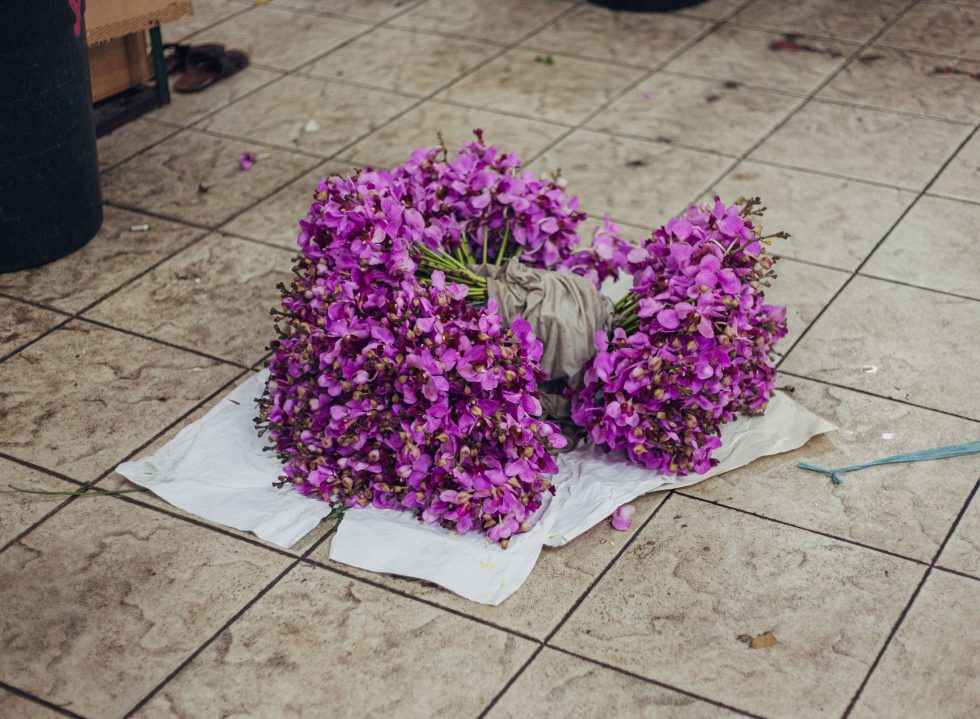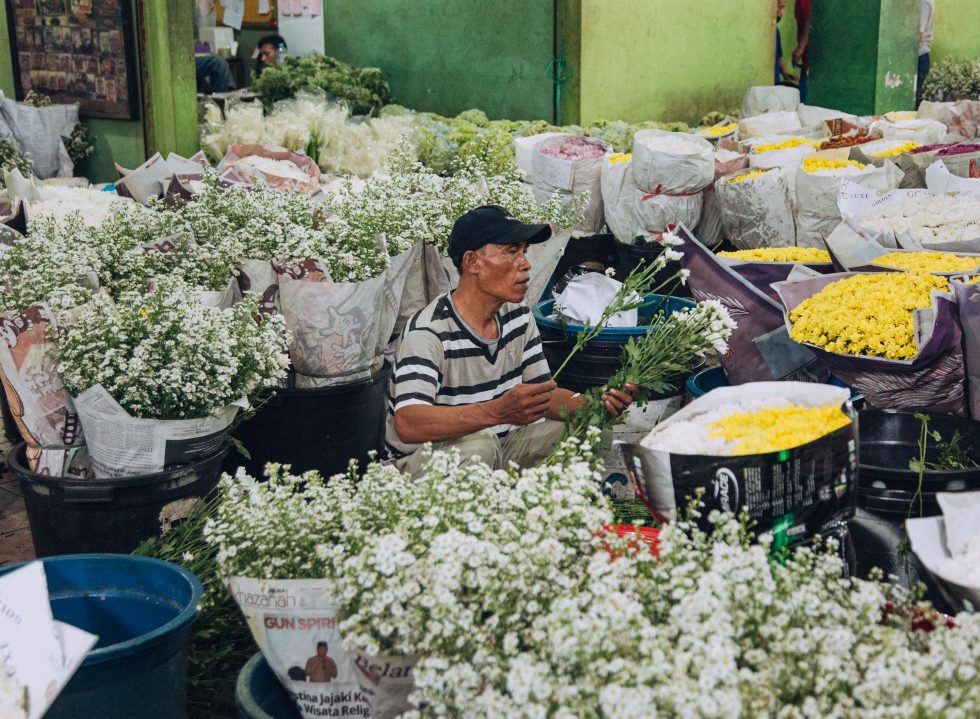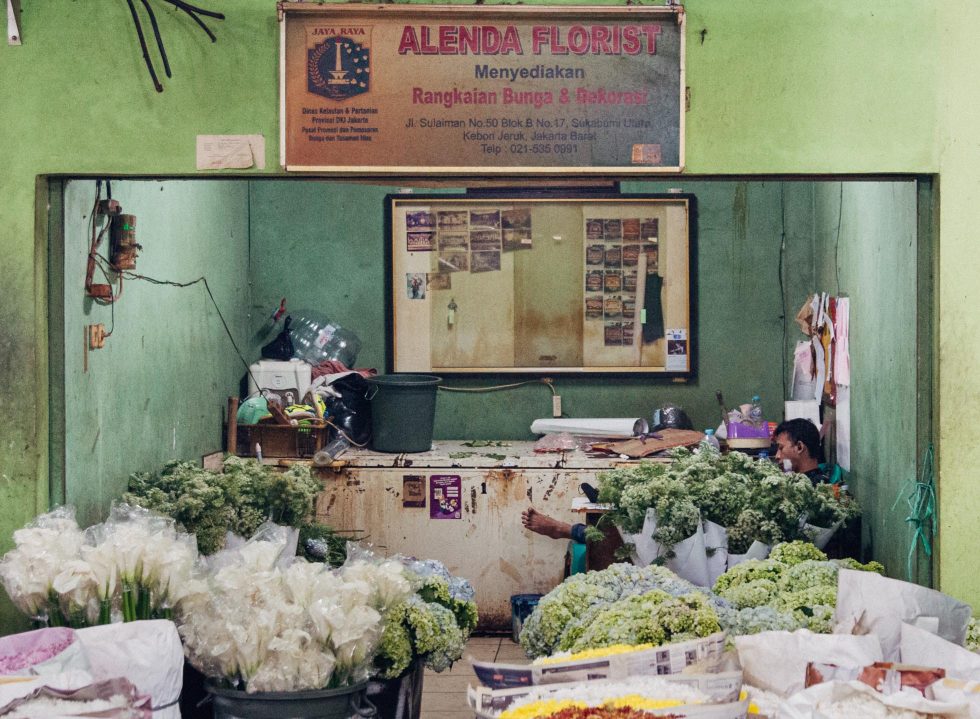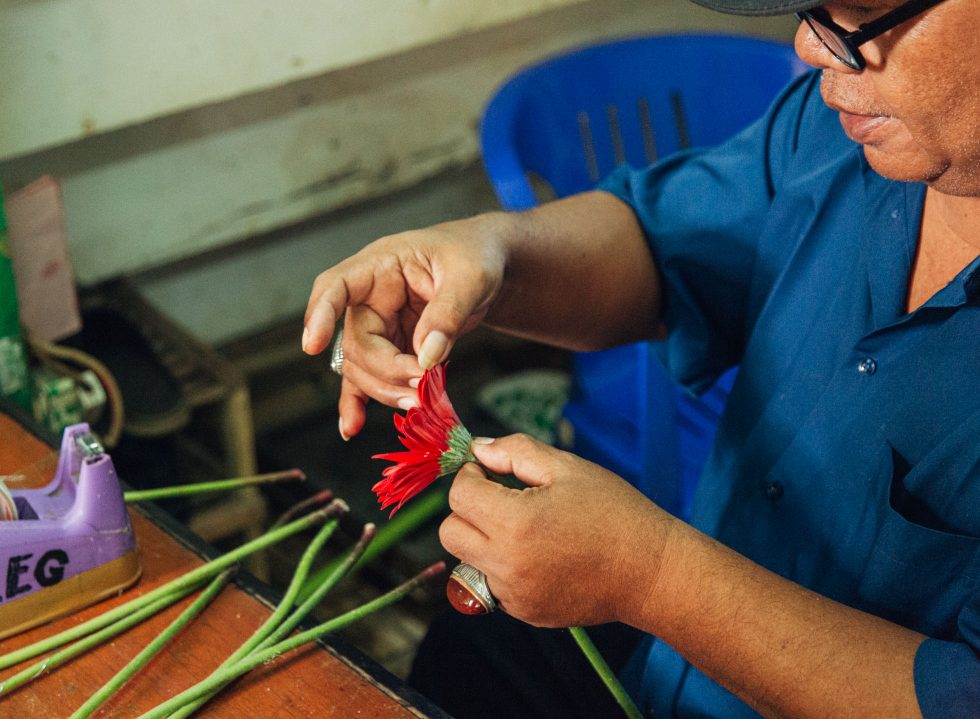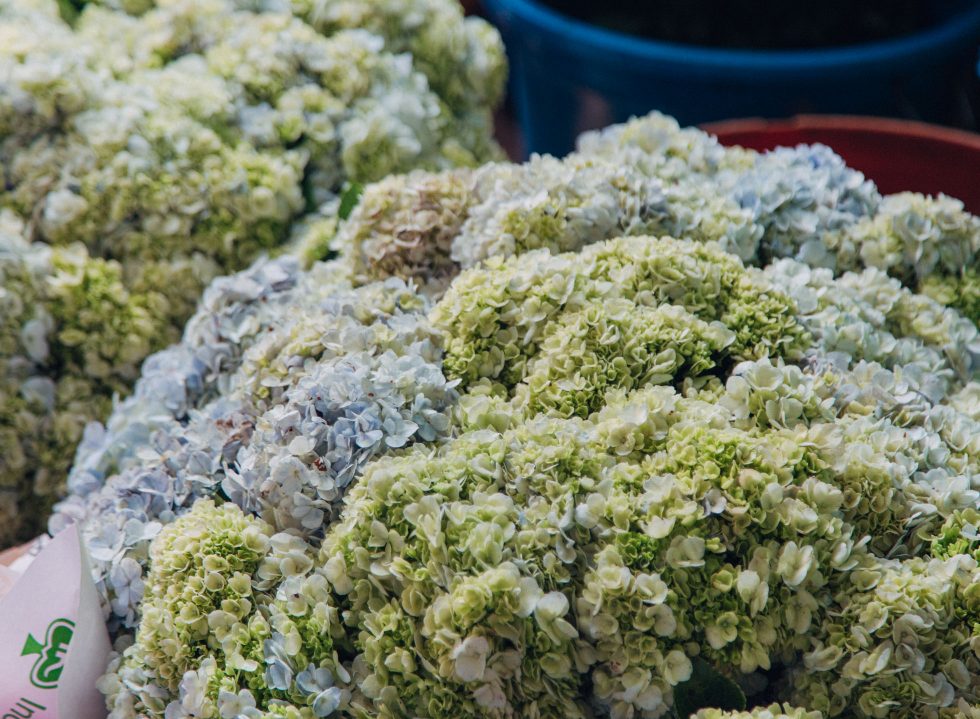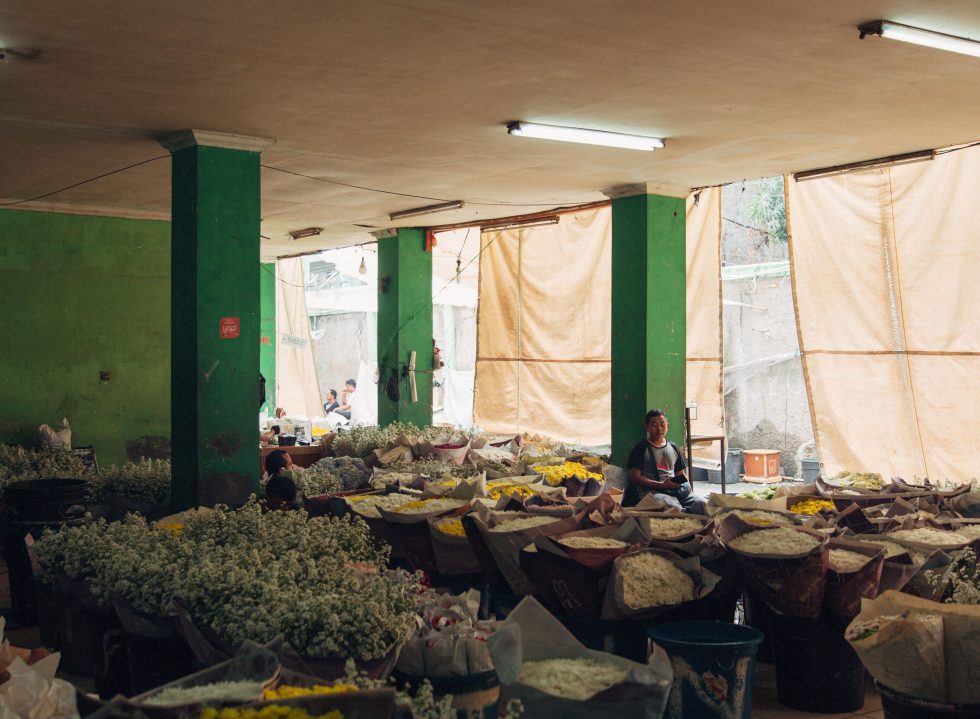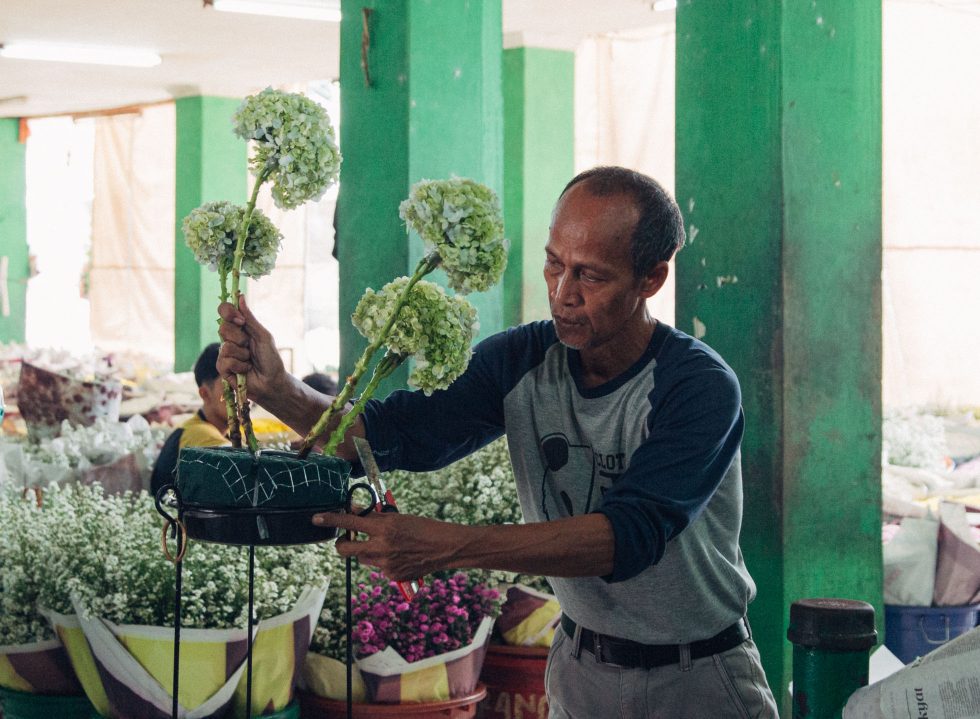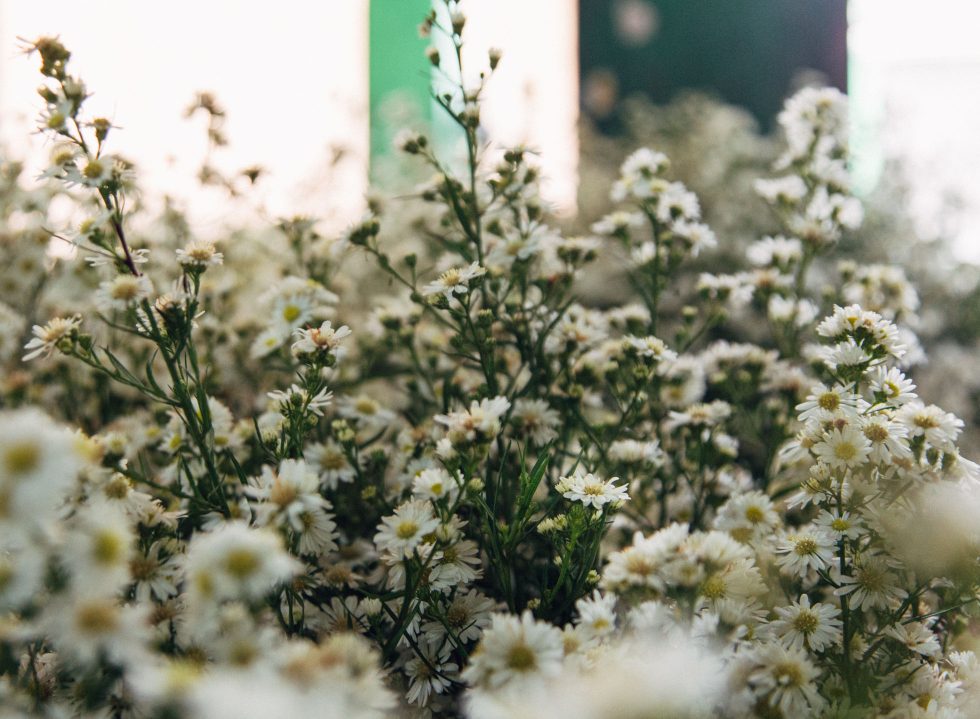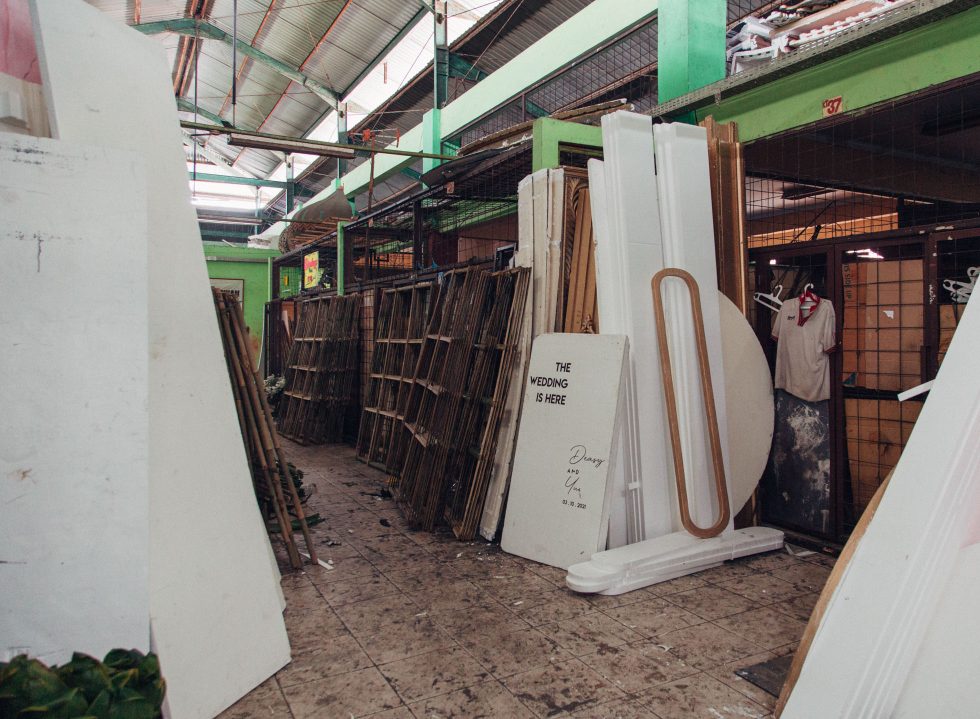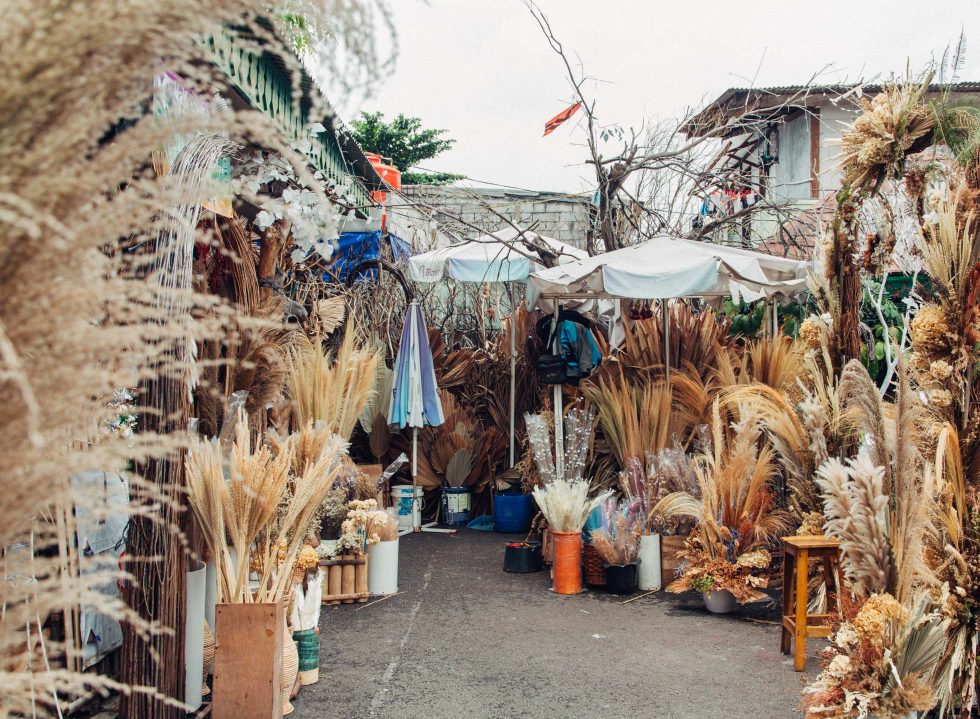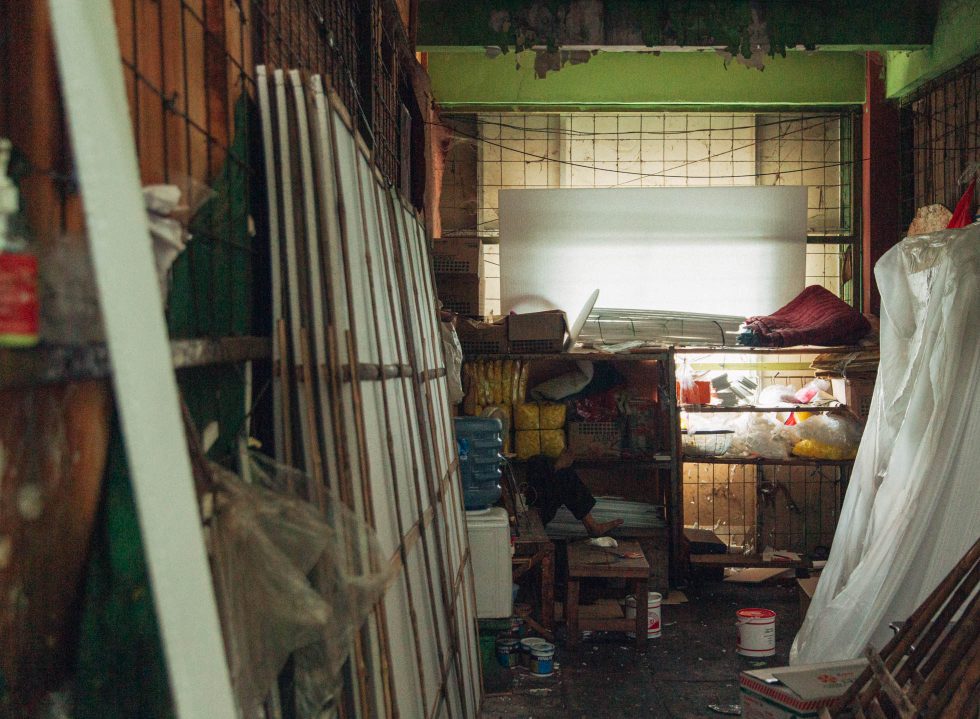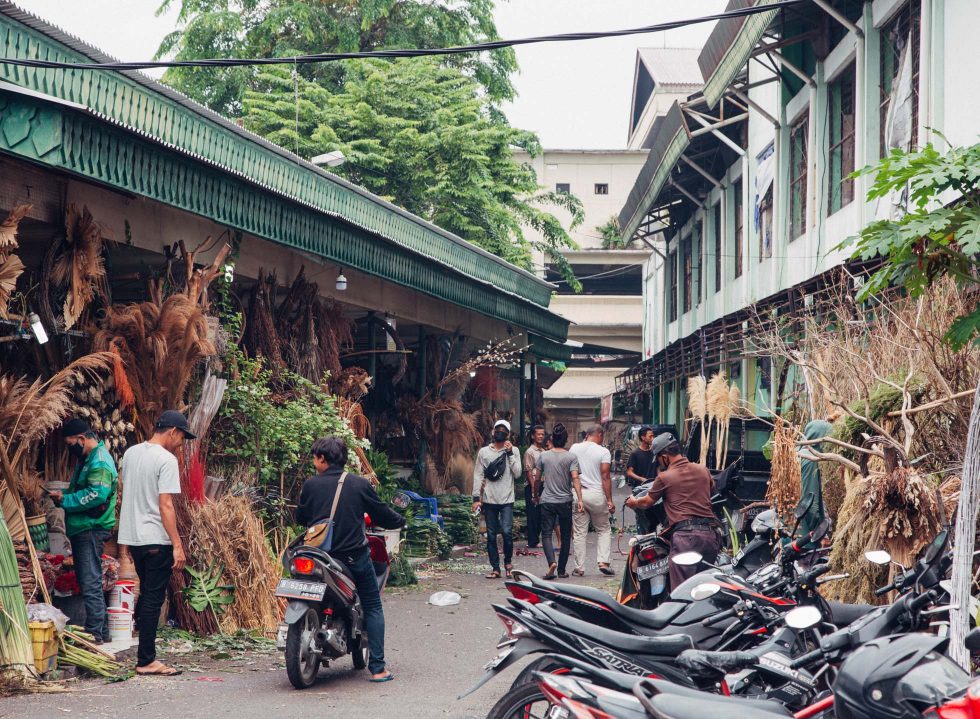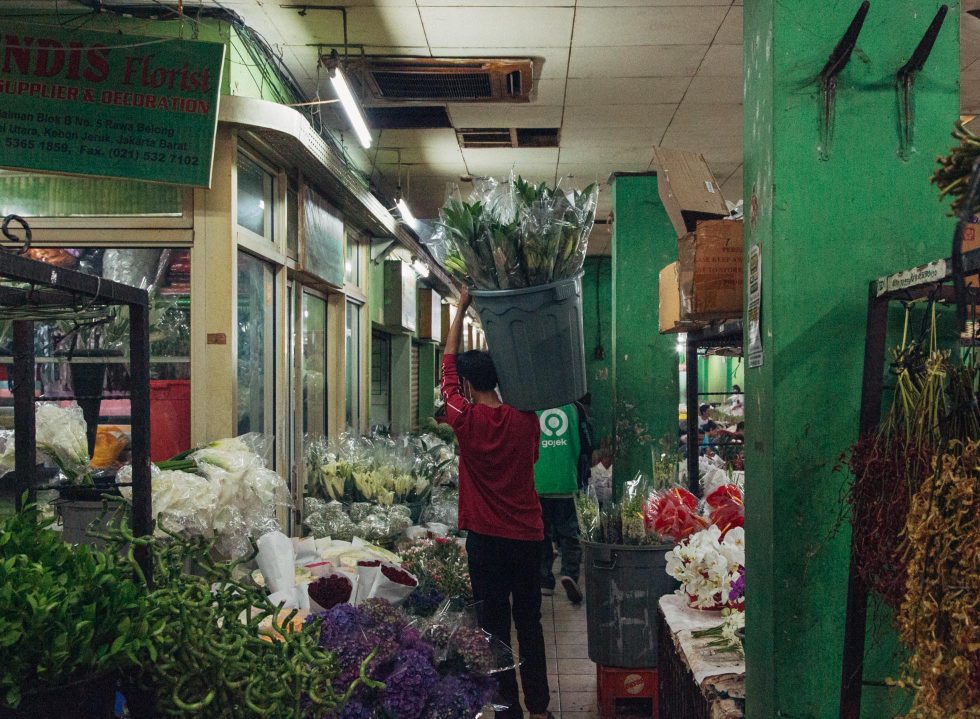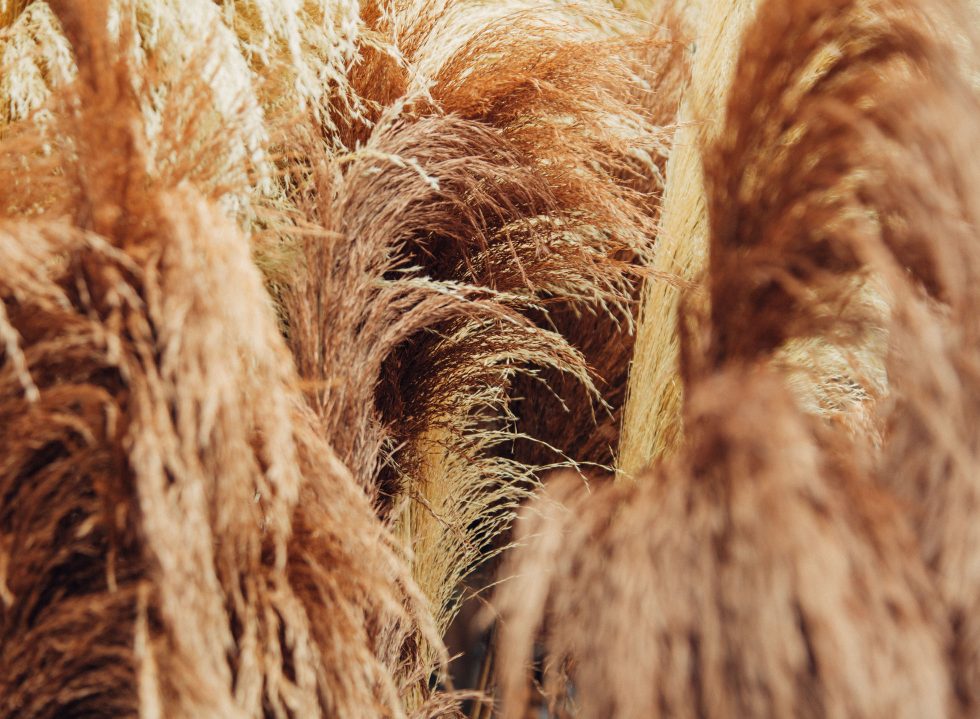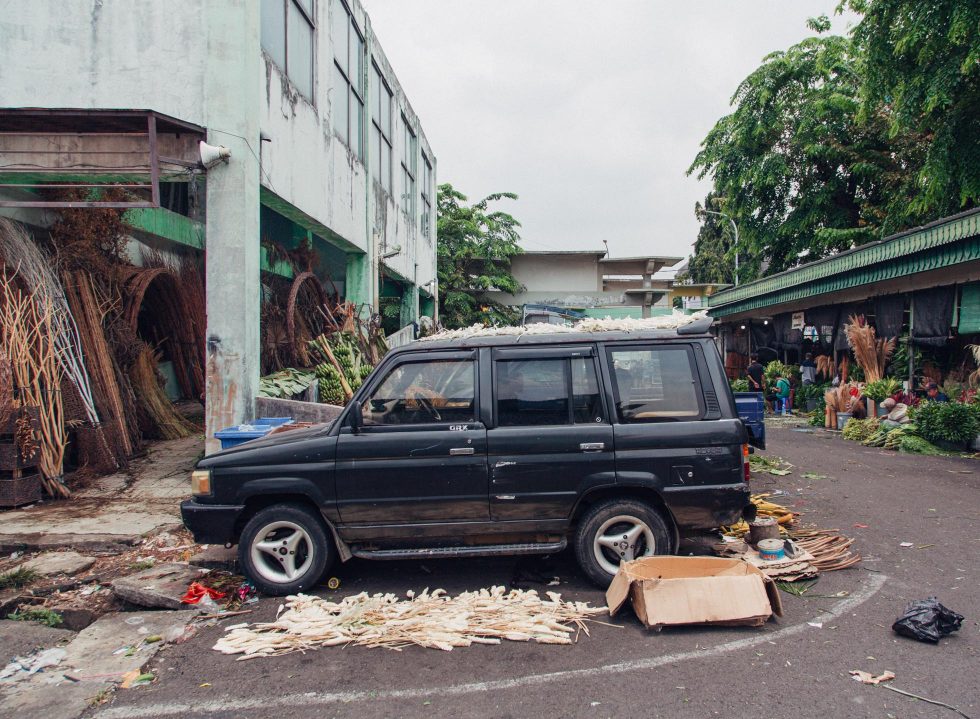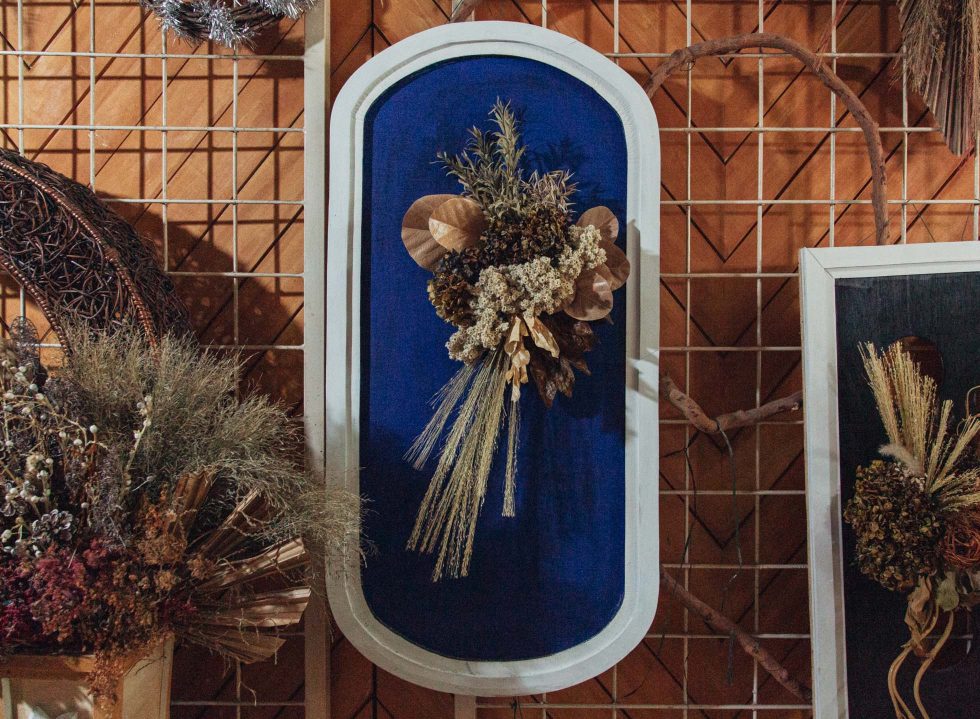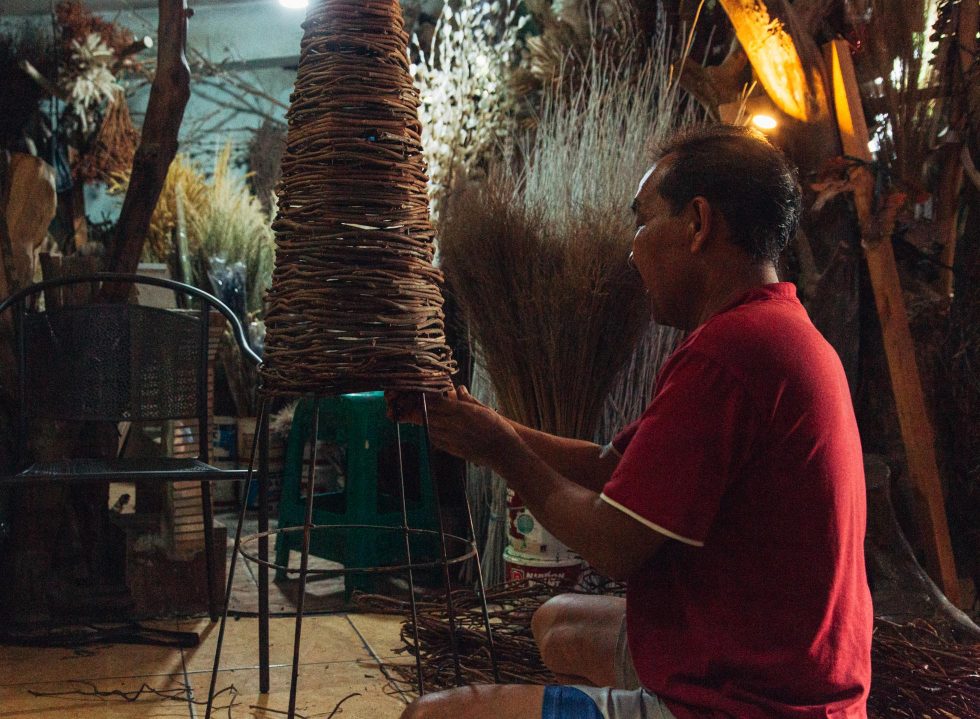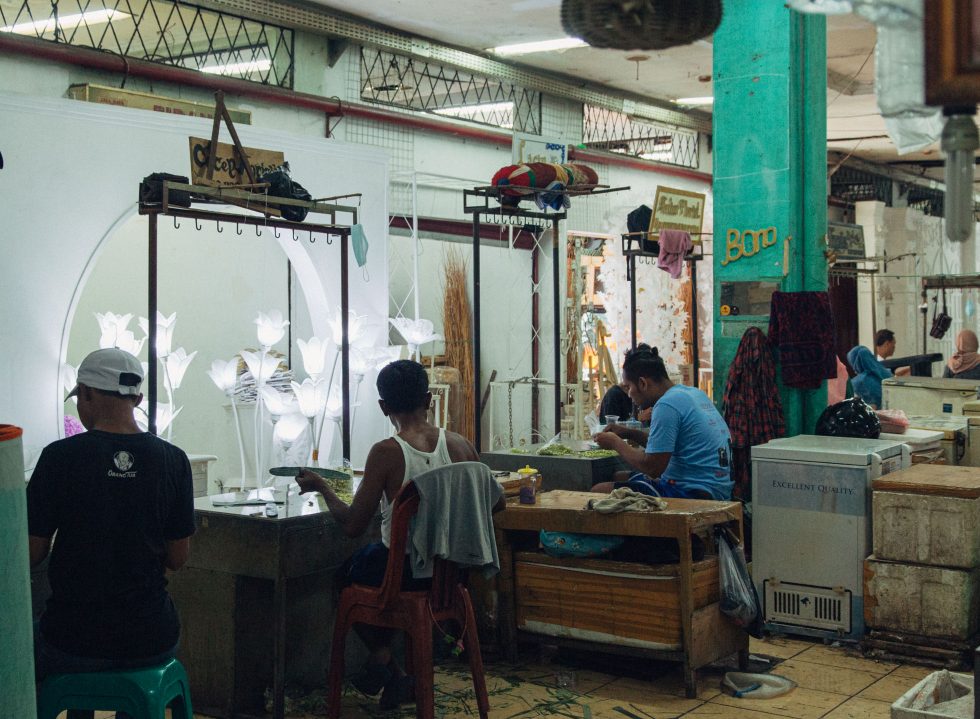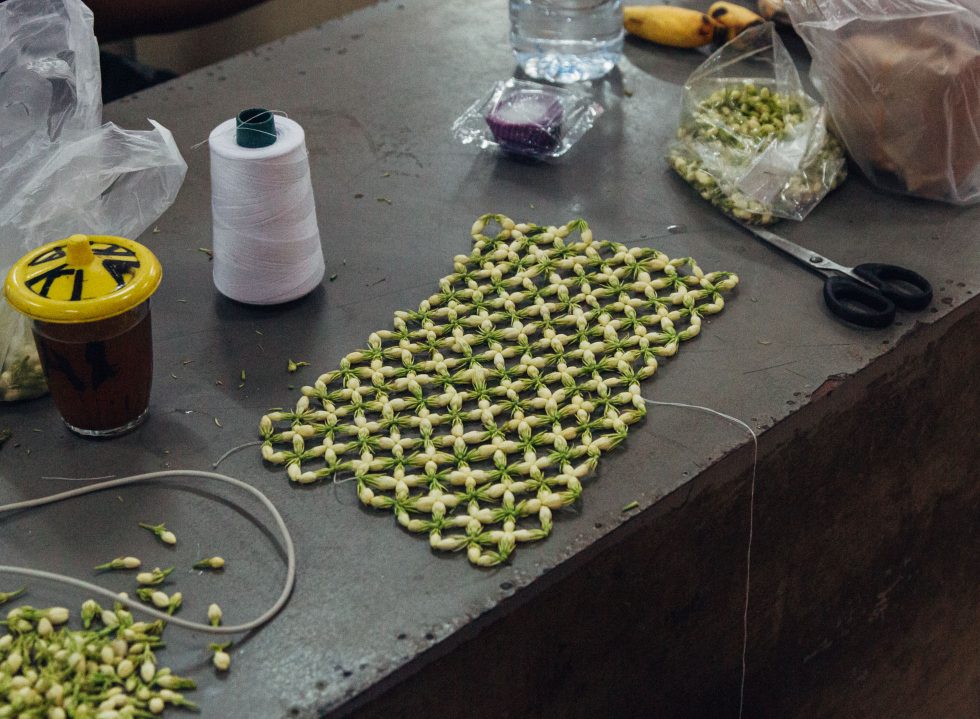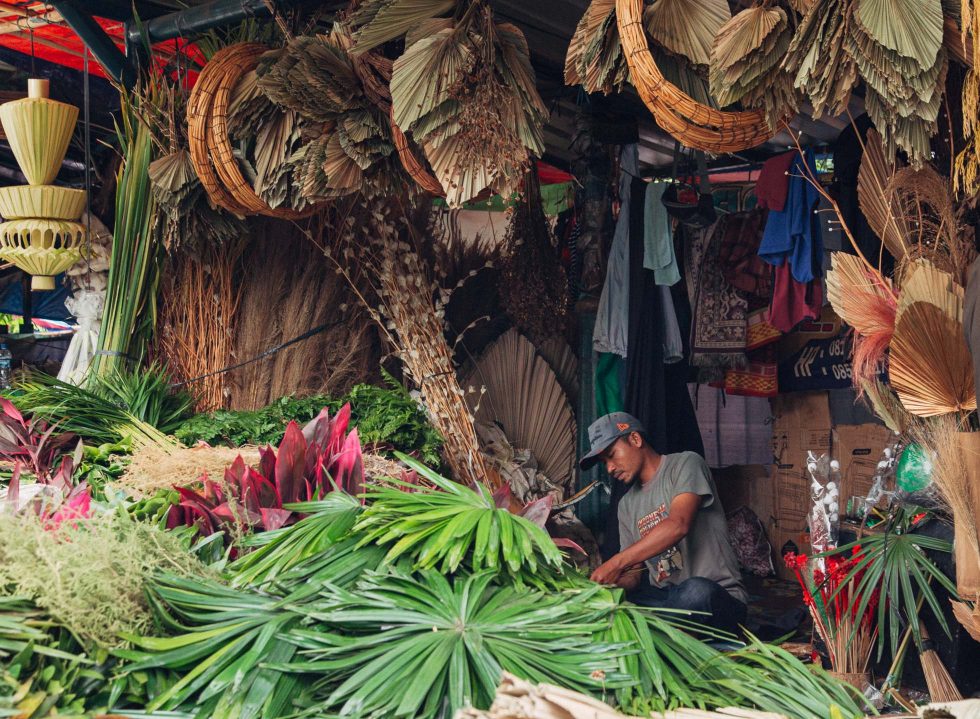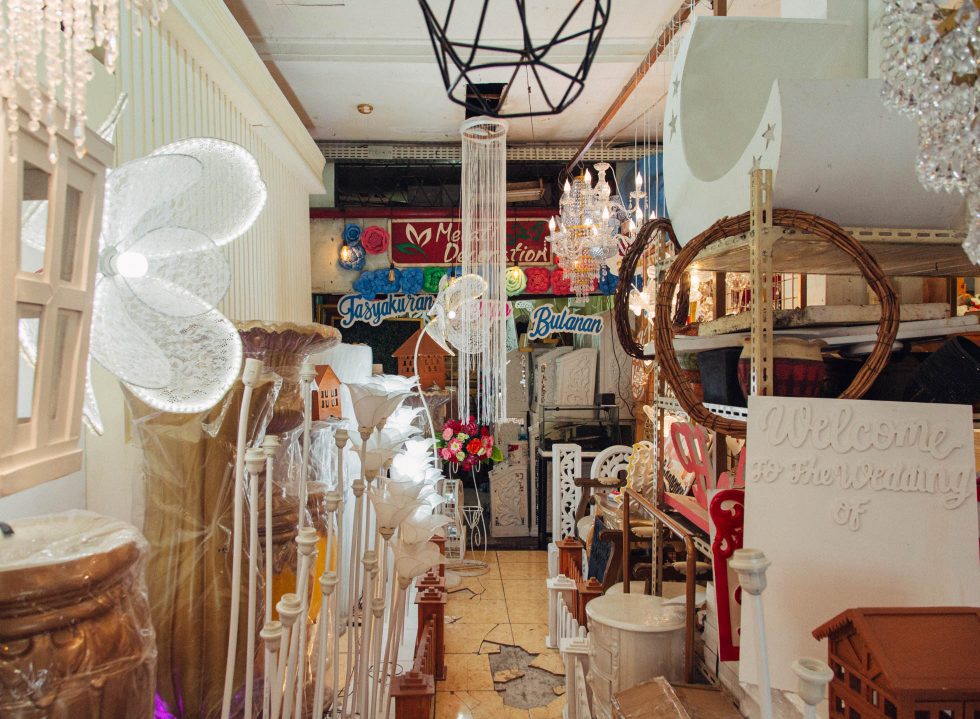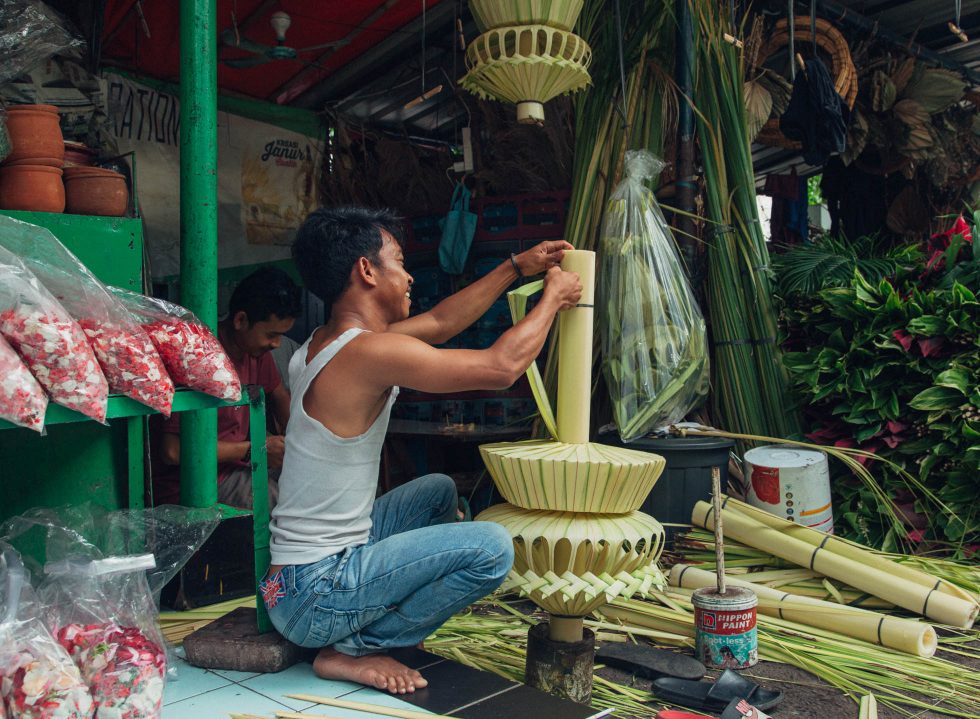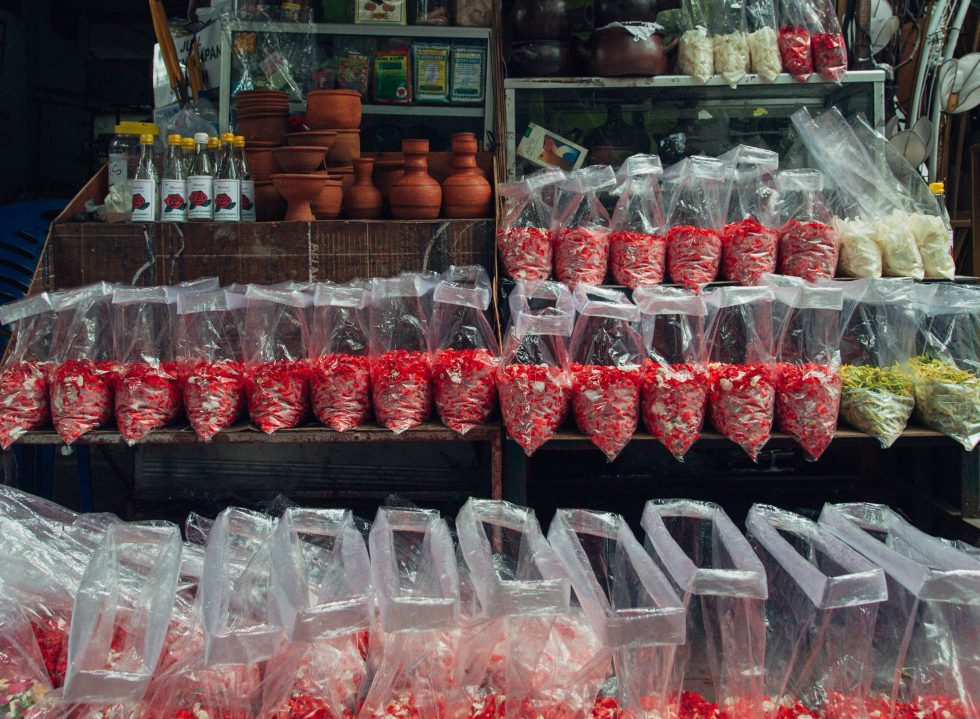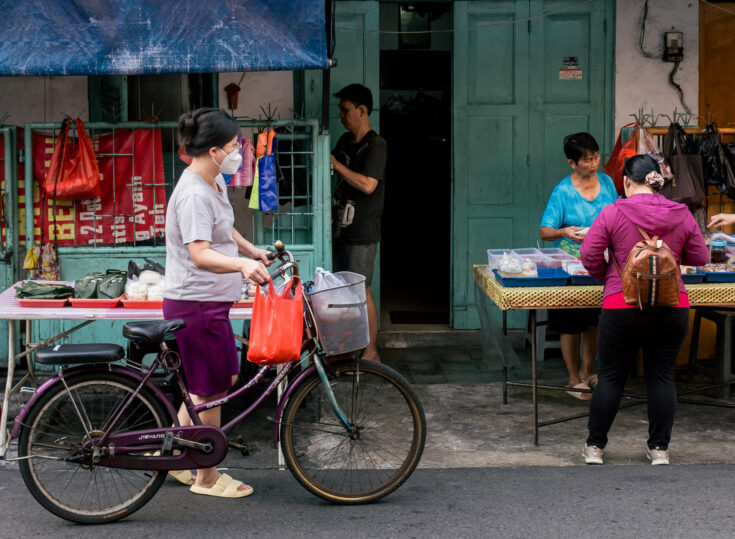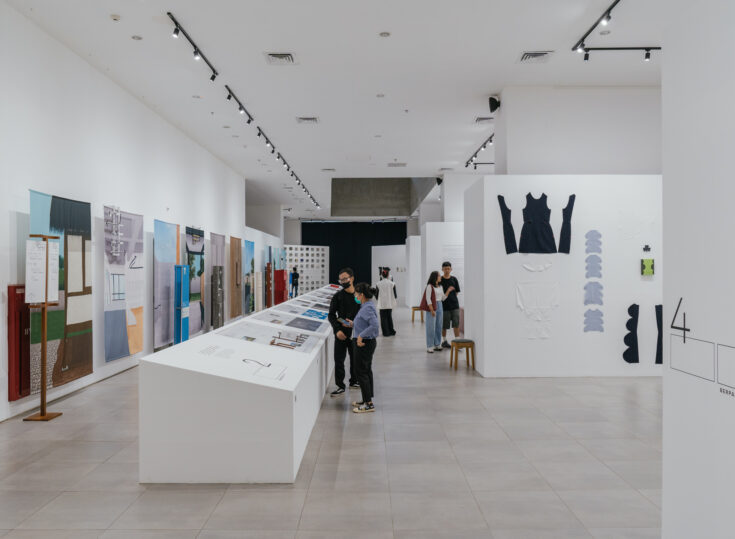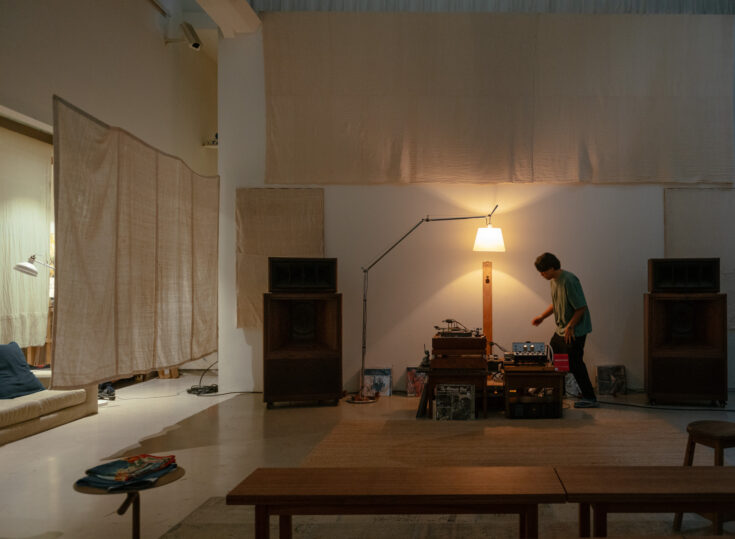Mornings and nights aren’t quite as easy to identify inside Rawa Belong Flower Market. Irrespective of the time of day, the flower market—which boasts the title of largest in Southeast Asia—is alive and in motion, carrying out a less revivifying side of a business that’s otherwise revered for its beauty, delicateness and emotions.
Home to over four hundred tenants, Rawa Belong Flower Market is parted into Block A, B, and C: the first two brims with colourful roses, chrysanthemums, long-stemmed sunflowers and lilies by the bucketload, while the third, positioned on the opposite road houses curious decorations. From mismatched signage, animal-and-flower-shaped lamps, artificial trees, and backdrops, the hall looks much like stepping into the backstage of a theatre.
But in retrospect, a flower wholesale market is the backstage of the business, where the actions here are much less romantic and more humdrum. Predominantly local, fresh-cut flowers find their way to the city on the back of a truck from cooler areas such as Puncak, Bogor, Sukabumi, Malang and are delivered twice a week for restocks.
Amidst a sea of flower buckets, merchants sit cross-legged on the floor and exchange friendly banters with one another while their hands nimbly move to wrap bouquets or pluck petals from wilting roses to then be repurposed as bunga tabur—usually scattered on cemetery grounds or used in flower baths.
On the second floor, template flower boards wishing ‘Happy Birthday’ or ‘Congratulations!’ are prepared ahead of their orders, ready to be customised and shipped off for delivery in a matter of minutes. It’s an enamouring play, but perhaps for different reasons than we imagine when thinking of beautiful foliages and flowery blooms.
As stock availability depends on the whims of the weather, it’s quite hard to predict market demands and price increase. On top of that, the long hiatus of weddings and celebratory events the past year has put the wholesale flower industry on indefinite hold. “The pandemic hit us hard. Up until now, we haven’t fully recovered. Sales have dropped 30%, but thankfully Whatsapp orders have helped us stay afloat,” recalls Mbak Jum, a tenant since 2013.
With the recent spike of weddings, decorative flowers are seeing a blooming demand and are slowly making a comeback, with red roses in particular quite hard to come by. A trick is to note their delivery times and plan your visit for the day after: Monday and Thursday mornings. “On these days, before daybreak, retail florists prowl for new arrivals. On special days, say Valentine’s for example, it gets a little crazy and prices can quadruple,” Pak Joko, another florist, noted.
Though the market is slowly seeing more life in the past few months, it hasn’t been able to bounce back since the pandemic. On a regular day, only a handful of masked shoppers can be spotted squeezing through the market, an unfortunate comparison to pre-pandemic days, where the usual 4 am morning hustle in the hall would pulse with last-minute orders, spirited haggling, and frantic deliveries.
